Welcome to Tech Transformation, a new feature showcasing the evolution of a technology or product over time. We start with Milwaukee Tool’s SAWZALL. Over the past 20 years, Milwaukee Tool has significantly advanced the SAWZALL®, a product that has set industry standards since its invention nearly 75 years ago. At the turn of the millennium Read more
Tech Transformation
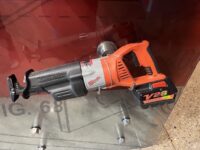
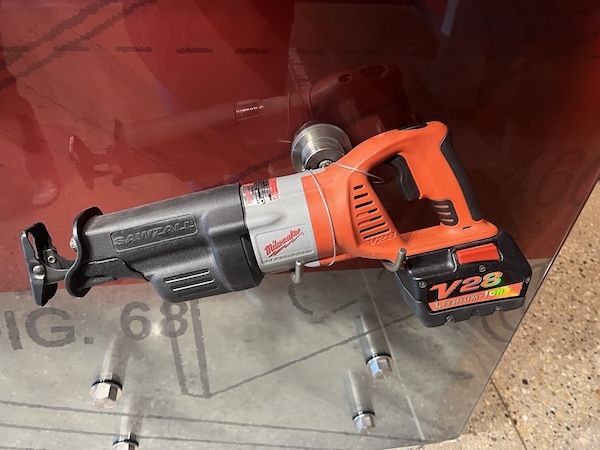
Milwaukee SAWZALL in 2008
Welcome to Tech Transformation, a new feature showcasing the evolution of a technology or product over time. We start with Milwaukee Tool’s SAWZALL. Over the past 20 years, Milwaukee Tool has significantly advanced the SAWZALL®, a product that has set industry standards since its invention nearly 75 years ago. At the turn of the millennium, Milwaukee® introduced the world’s first cordless SAWZALL® that could compete with its legendary corded counterpart, allowing professionals to cut the cord for the first time. Powering the 0719 model was the 28 Volt LITHIUM-ION battery pack, exclusively from Milwaukee, which marked a revolutionary leap in cordless tool technology at the time.
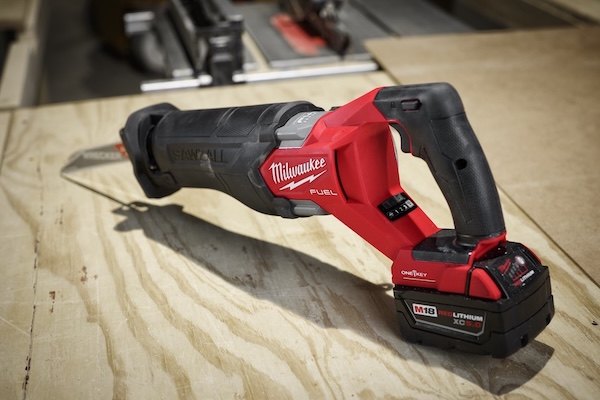
Today’s M18 FUEL™ SAWZALL® Recip Saw, Gen 2, w/One-Key
Milwaukee set out to change the lives of users introducing the M18™ cordless system and made a commitment that they continue to deliver on to this day: Milwaukee would continue to invest in new technology without the need for users to change platforms. This innovation paved the way for the game-changing M18 FUEL™ SAWZALL®.
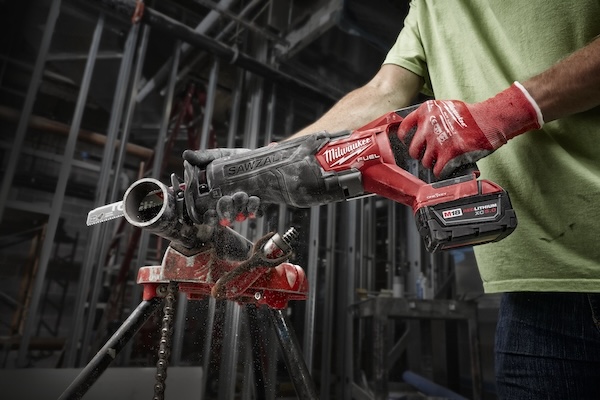
Since then, Milwaukee has continued to push the boundaries of performance and reliability. The current M18 FUEL™ SAWZALL® Recip Saw w/ ONE-KEY™ (2822-22) now boasts fastest cutting in class, improved durability, and lightweight designs for reduced fatigue. Leveraging a POWERSTATE™ Brushless Motor, this newest generation provides 3,000 SPM and a 1-¼” stroke length for faster material.

The gear-protecting clutch further enhances durability by safeguarding against impact, upholding the legendary SAWZALL® reputation. Additionally, the introduction of ONE KEY™ tracking technology and slider crank mechanism upgrades ensure that the SAWZALL® remains a leader in the industry, continually meeting the evolving needs of professionals.
For more information, www.milwaukeetool.com
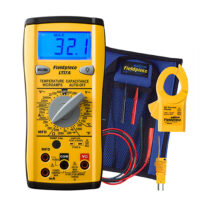
Fieldpiece is dedicated exclusively to creating tools for HVACR professionals. Our bedrock was built on the innovation of the stick meter, which has since evolved into a full portfolio of electrical meters—a true reflection of our unwavering commitment to the industry. The Birth of Fieldpiece: Innovation Rooted in Experience Fieldpiece’s journey began with a vision Read more
Fieldpiece is dedicated exclusively to creating tools for HVACR professionals. Our bedrock was built on the innovation of the stick meter, which has since evolved into a full portfolio of electrical meters—a true reflection of our unwavering commitment to the industry.
The Birth of Fieldpiece: Innovation Rooted in Experience
Fieldpiece’s journey began with a vision that transformed the industry. In 1990, Fieldpiece Founder Rey Harju, was inspired to create a tool to revolutionize how HVACR technicians performed their jobs. Rey envisioned a stick meter with detachable heads that could be swapped out based on the measurements required. There was nothing like it on the market, and Rey knew that this single, versatile tool could simplify and enhance the diagnostic process for techs in the field.
After three years of testing, development and refinement in his garage, the HS24 stick meter was born. This innovative tool wasn’t just another meter – it was a game-changer. Today, Fieldpiece has continued to push the boundaries of what’s possible, introducing industry-defining products like the SMAN® Digital Manifold and the wireless Job Link® System probes, each designed to make HVACR work more efficient and effective.
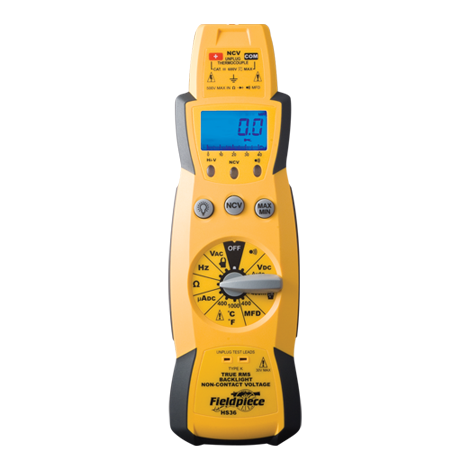
Designed Specifically for HVACR Technicians
Every HVACR technician faces a unique set of challenges, whether working on a rooftop in sweltering heat or diagnosing issues in a cramped mechanical room, techs have it tough enough. That’s why Fieldpiece electrical meters are built with the features and flexibility needed to tackle any situation.
- SC680 Swivel Clamp Meter: If you’re looking for a meter that does it all, the SC680 is your go-to tool. It’s packed with features, including real-time power readings, temperature measurements up to 1000°F, and Molex tip leads for small power connectors. The SC680 also filters out noise from Variable Frequency Drives (VFDs), ensuring accurate readings even on complex systems. Job Link® System connected, you can leave the meter behind a closed blower door and view the current measurement on your mobile device.
- SC260 Compact Clamp Meter: Need something smaller for tight spaces or as a reliable backup? The SC260 is small but mighty, with features like capacitance testing for motor start and run capacitors, non-contact voltage detection and a strong, swivel magnet for hands-free operation. It’s perfect for technicians who need a meter that’s both versatile and easy to carry.
- HS36 Stick Multimeter: For those who prefer stick meters, the HS36 offers everything you need in a pocket-sized package. It includes True RMS, microamps for flame diode testing and the ability to work with all Fieldpiece accessory heads. The built-in magnetic hanger and rugged design make it a durable, reliable tool for any job.
- LT17A Digital Multimeter: A classic that never goes out of style, the LT17A covers all the basics with added features like temperature measurement up to 1400°F, capacitance testing and compatibility with Fieldpiece accessory heads. It’s the perfect combination of reliability and value.
More Than Just Meters: A Commitment to Ongoing Innovation
At Fieldpiece, we understand that the HVACR industry is constantly evolving and the needs of HVACR professionals along with it. That’s why we’re committed to continuous innovation and our meters are a testament to this philosophy. And while our meters define an industry, we’re not stopping there. We’re always working on new features, accessories and software to ensure you have the best tools to get the job done right.
From our humble beginnings in Rey’s garage to becoming a leader in HVACR tools, Fieldpiece remains dedicated to one mission: providing HVACR professionals with the most advanced, reliable and user-friendly tools on the market. Whether you’re just starting in the industry or are a seasoned pro, Fieldpiece has the meters you need to succeed.
Explore our full range of meters and see how Fieldpiece can take your work to the next level. For more information, visit Fieldpiece Electrical Meters.
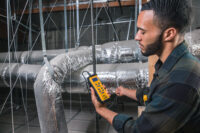
By Tony Gonzalez, Director of Training at Fieldpiece Instruments As HVACR technicians, job number one is ensuring the comfort of the customer. For an HVACR system, it is effective heat transfer and efficient conditioning in all intended zones of the system. Efficient distribution of airflow in both residential and commercial spaces greatly impacts the ability Read more
By Tony Gonzalez, Director of Training at Fieldpiece Instruments
As HVACR technicians, job number one is ensuring the comfort of the customer. For an HVACR system, it is effective heat transfer and efficient conditioning in all intended zones of the system. Efficient distribution of airflow in both residential and commercial spaces greatly impacts the ability of the system to effectively heat or cool the intended zones. Proper airflow across an evaporator coil and throughout the ductwork can efficiently condition a space and keep it comfortable, while improper airflow can lead to some rooms struggling to stay cool or even reach the target temperature. In situations like this, the problem at hand may be improper air balancing.
What is Air Balancing?
In short, air balancing is the process of testing and adjusting your air conditioning system to deliver the right amount of air to the zones of a given space. Proper air balancing ensures that each room or zone receives the correct amount of air, maintaining consistent temperatures and improving system efficiency. It is a critical step in both the installation of new systems and the maintenance of existing ones to ensure optimal performance and comfort.
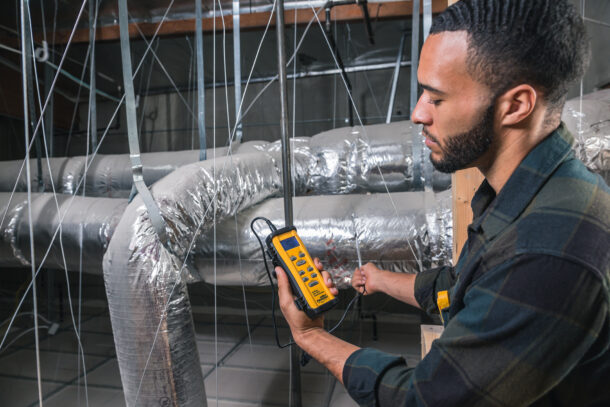
Signs of Improper Air Balancing
When a single system is effective in some zones, and not others, a technician may need to conduct air balancing. This starts with some simple diagnostics of the zones themselves. Using an IR thermometer or psychrometer, conduct a walkaround test and read temperatures from all registers in each space. Record temperatures manually, or if using psychrometer probes like Fieldpiece’s JL3RH Job Link® system probes, view all live temperature readings at once on the Job Link® System App. Once the underperforming zones are identified, move on to troubleshooting.
Conducting Air Balancing
Once the problematic zones are identified, first check to see if there are dampers, and if they are properly positioned. Manual dampers may have been closed off halting airflow, or electronic dampers may be malfunctioning to improperly manipulate airflow. Adjust all dampers while monitoring temperature from registers in problem zones to see if performance improves. If dampers are all properly set and the problem zones remain unchanged, an inspection of equipment CFM and static pressure may be necessary.
To check equipment CFM, technicians can use either an airflow capture hood, or an anemometer like the Fieldpiece STA2 Hot Wire Anemometer to conduct a traverse. Conduct a traverse in the appropriate location for the given system, for most residential systems this will be as close to the return or return plenum as possible. Run the system for at least 15 minutes to allow the system to stabilize. If using an anemometer, conduct a traverse by first setting the anemometer to the appropriate return size, and record airflow readings across the return space. For proper measurement points for rectangular, square and round ducts, see the Fieldpiece STA2 Operator’s Manual. In a balanced system, total return CFM should equal total Supply CFM. Compare measured CFM to manufacturer specifications for the given equipment to see if it falls within the target values.
To check system static pressure, use a dual port manometer or wireless manometer probes like the Fieldpiece JL3KM2 with static pressure tips and flexible tubing. Zero the manometer while in ambient pressure with any tubing or probes attached. Specific placements will vary depending on your equipment, but in general target manometer placement will be before the blower and after the coil or heat exchanger. Be sure to point the static pressure probe into the direction of the airflow. Calculate the total external static pressure (or TESP) by adding the return and supply readings. Comparing the measured TESP to the equipment’s design specifications can indicate static pressure issues.
If CFM is found to be lower than the manufacturer specifications, or static pressure is found to be too high, several troubleshooting steps can be taken.
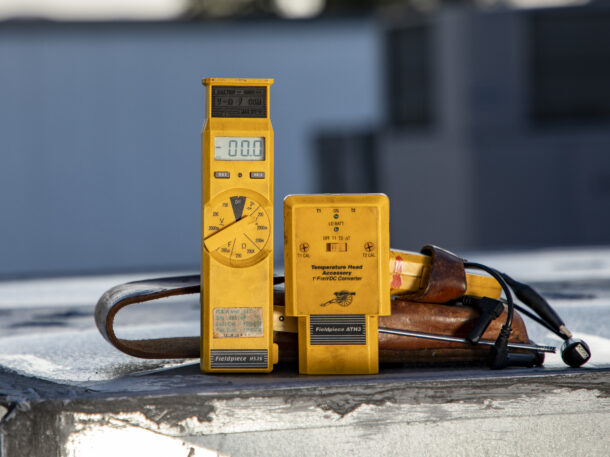
Troubleshooting Tips
Check the return filter to ensure it is free of obstructions such as furniture or other items that may restrict airflow. Next, inspect the blower and make sure it is free of buildup and set to the appropriate speed, or setting for variable speed blowers. Inspect the evaporator coil and clean if required. Lastly, check the actual sizing of the return and supply plenum, as improper installation or obstruction may be constricting airflow. This applies to ducting throughout the system as well, so check for inefficient installation and leaks. Ensuring each of these possible points of impedance is addressed can greatly improve overall system airflow and air balancing.
Keep in mind that the equipment in an HVACR system is only part of the equation. Other considerations to customer comfort should include the structure of the home and other additional factors. These may include customer preference, room orientation and ceiling height, points of ingress and egress such as door cut and clearance, insulation, and the orientation of the structure itself as zones in direct contact with sunlight will require additional cooling.
Systems that meet all manufacturer specifications and have no discernable inefficiencies present may still struggle to properly condition a given space. Under more extreme circumstances, an undersized system may have been installed. Requirements for system size may vary regionally, but in general there should be 1 ton of system for every 400-500 square feet of conditioned space. While it may be more common for an installer to oversize a system to ensure enough heat transfer, system size is a critical factor that should not be overlooked.
Final Thoughts
Airflow is a critical aspect of every HVACR system. Both airflow across the evaporator coil and airflow through the ductwork itself are essential for effective air conditioning in a given space. When airflow is imbalanced, comfort in individual zones can suffer. Proper air balancing can greatly increase effective conditioning and comfort in all zones, making troubleshooting and finding solutions yet another essential tool in a technician’s toolbelt.
 ABOUT THE AUTHOR: Tony Gonzalez has over 20 years of HVAC experience with Fieldpiece Instruments and has been leading Fieldpiece training since 2020. Tony presents courses nationally at conferences, partners with leading industry organizations, and is recognized everywhere for his how-to videos. Tony is committed to sharing the best practices that make HVAC technicians’ jobs easier, faster, and better.
ABOUT THE AUTHOR: Tony Gonzalez has over 20 years of HVAC experience with Fieldpiece Instruments and has been leading Fieldpiece training since 2020. Tony presents courses nationally at conferences, partners with leading industry organizations, and is recognized everywhere for his how-to videos. Tony is committed to sharing the best practices that make HVAC technicians’ jobs easier, faster, and better.

Housing projects are complex enough, these stylish products can streamline the furnishing process Multifamily housing projects can get expensive but knowing what fixtures to use may reduce overhead costs and help contractors simplify the furnishing process in the kitchen and bath. From sleek modern fixtures with clean lines to timeless traditional styles that exude classic Read more
Housing projects are complex enough, these stylish products can streamline the furnishing process
Multifamily housing projects can get expensive but knowing what fixtures to use may reduce overhead costs and help contractors simplify the furnishing process in the kitchen and bath. From sleek modern fixtures with clean lines to timeless traditional styles that exude classic charm, Peerless® Faucet provides contractors multifunctional options to complement any kitchen or bathroom renovation. The brand’s designs also feature quality materials, bold finishes, and user-friendly functionality, ensuring every fixture combines beauty and practicality.
Beautiful Designs for Every Style
Peerless fixtures are celebrated for their stylish aesthetics, which range from modern minimalism, contemporary, and even timeless traditional styles. Whether it’s a sleek chrome finish for a contemporary kitchen or a brushed nickel fixture for a cozy bathroom, the brand offers contractors a wide variety of options to complement any unit’s look and feel.
By focusing on clean lines and thoughtful design elements, Peerless creates faucets and fixtures that do more than just function — they elevate spaces, making them visually striking. This appeal is not only popular among contractors aiming to bring on-trend looks to their multifamily projects, but also renters who are looking to upgrade their fixtures without the hefty price tag.
This year, Peerless launched its new Ezra™ Kitchen and Bath Collections — with an array of unique finish options to choose from. In the kitchen, the Ezra Single-Handle Pull-down Kitchen Faucet offers striking lines paired with soft, sweeping curves. This faucet completes a traditionally modern aesthetic that pairs nicely with chestnut brown cabinetry and black/silver finishes alike. In fact, introducing the current mixed metals design trend into the kitchen is easy with Ezra. One can accessorize around the faucet with soap dispensers, cabinetry handles, lifestyle pieces or even other appliances — pairing the finish with a contrasting metal.
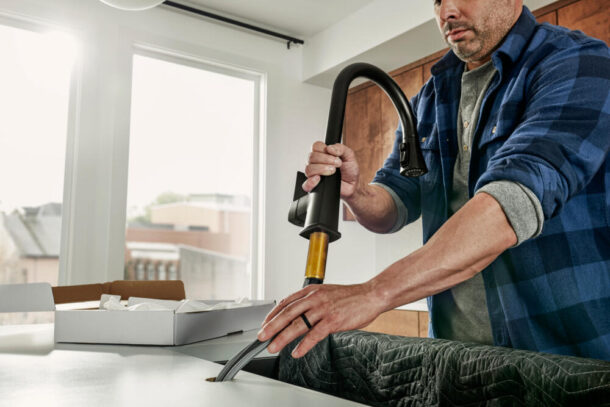
The EZRA™ Single-Handle Pull-down Kitchen Faucet (Matte Black)
Quality Materials Without the Big Spend
A successful commercial build starts with strong foundations, and to ensure projects provide long-lasting renovations, contractors should prioritize durable, high-quality materials are present across their kitchen and bath fixtures.
Peerless is renowned for its commitment to quality, crafting fixtures from durable materials (i.e. ceramics within most faucet disk valves) designed to withstand the demands of daily use. The brand’s faucets are built with long-lasting finishes that resist tarnishing and corrosion, ensuring they maintain aesthetic appeal for years. For contractors working on multifamily projects, Peerless offers ceramic valves across many fixtures, so no matter what collection contractors choose, they’re always guaranteed quality and durability.
Functional Affordability Without Compromise
One of Peerless standout qualities is its affordability. Renters on a budget and professionals managing large-scale renovations alike benefit from the brand’s cost-effective, yet functional offerings.
Beyond its stylish, on-trend designs, the brand also offers fixtures that are equipped with useful functionalities that contractors should be aware of. Peerless strives to ensure it provides additional value to the end user, by offering affordable, smart solutions in the kitchen and bath:
- POWERinse™: When money is tight, this technology is a great option to save contractors and renters additional spend on sink washing alternatives. More than a typical spray mode, Peerless’ POWERinse™ utilizes extremely narrow ports to create back pressure. That back pressure, in turn, results in a blast of water that easily powers away food residue.
- Push Pop-Up Drain Assembly: Included in a wide range of Peerless bath fixtures, this complimentary feature saves contractors both time and money while delivering on-trend details. Unlike other drain assemblies that require multiple parts (and purchases), this user-friendly accessory works seamlessly with the faucet itself and comes with all necessary parts for easy installation.
- MultiChoice® Universal Valve: This nifty valve gives contractors the freedom to decide on what type of shower valve function and trim style they want — without altering the plumbing behind walls. It also works with an array of shower trim styles. MultiChoice Universal Valve also pairs with shower trims across the Delta Faucet Company portfolio, making redesigning a breeze.
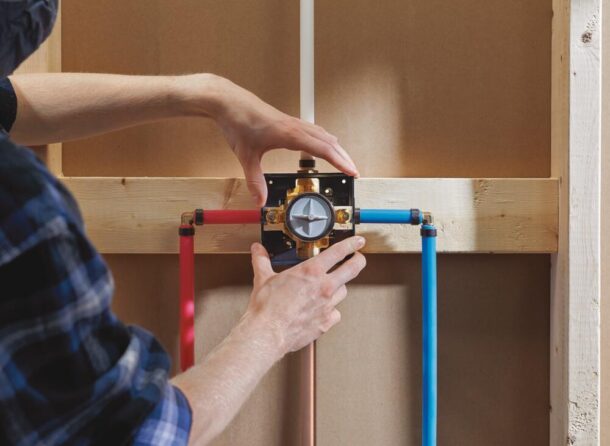
MultiChoice® Universal Valve
Peerless understands that no two customers are the same. Contractors value its dependability and efficiency, while homeowners love the brand’s ability to transform their kitchens and bathrooms affordably. In today’s world, where functionality and design must coexist seamlessly, Peerless stands out as a brand that delivers on all fronts. Whether you’re a seasoned contractor or learning the ropes, Peerless keeps trade pros happy by offering fixtures that are stylish, durable, easy to install and affordable, proving that elegance and affordability can indeed go hand in hand.
For more information about Peerless and its multifamily offerings, visit www.peerlessfaucet.com/faucet-professionals or follow Peerless on Instagram, Facebook, or Pinterest.

RefrigiWear, a 70-year pioneer in safety apparel and insulated PPE for winter workers, now delivers two high-visibility versions of its best-selling insulated softshell bib overalls. Available in high-visibility lime or high-visibility orange, the HiVis Insulated Softshell Bib Overalls are perfect for plumbers, pipefitters, tower climbers and road construction workers who need to stay warm and Read more
RefrigiWear, a 70-year pioneer in safety apparel and insulated PPE for winter workers, now delivers two high-visibility versions of its best-selling insulated softshell bib overalls.
Available in high-visibility lime or high-visibility orange, the HiVis Insulated Softshell Bib Overalls are perfect for plumbers, pipefitters, tower climbers and road construction workers who need to stay warm and visbile in cold, wet weather.
Ready for Rough Weather
HiVis Insulated Softshell Bib Overalls from RefrigiWear give workers the protection they need to get the toughest jobs done, even in temperatures as cold as -20°F. With a wind-tight and water-repellent outershell to guard against rain, sleet, snow and icy winds, these bibs help workers stay warm, dry and focused on the job.
Working through rough weather requires outerwear tough enough to take on the cold without falling apart. Abrasion-resistant patches and reinforcements help these insulated overalls stand up to tough work, especially when the job requires kneeling, squatting or climbing. Two rows of durable silver reflective tape are bonded, not stitched, on the legs to avoid snagging on equipment or unraveling with long use.
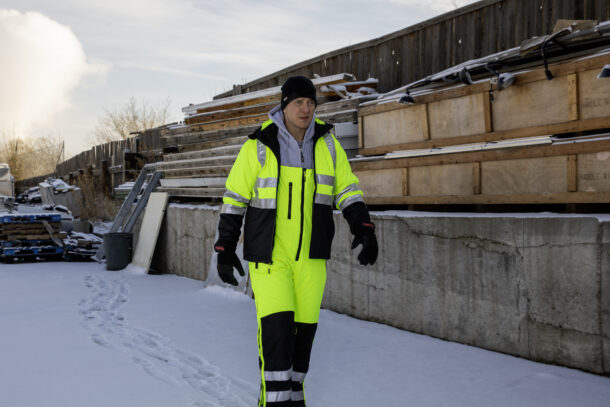
Warm, Comfortable & Functional
When the wind chill falls below freezing, most folks would rather head for home. For those who must stay and face the freeze, HiVis Insulated Softshell Bib Overalls deliver over 400 grams of lightweight, synthetic insulation. Plus, a silver heat-reflecting lining traps escaping body heat and reflects it back to the wearer for extra warmth and comfort.
Adjustable Y-back suspenders provide higher coverage for the back and torso. This design protects the vulnerable organs in the core from the cold without limiting range of motion in the shoulders, so workers can swing hammers, lift lumber or simply stretch their arms in complete comfort. Above-knee leg zippers make it quick and easy to step in or out of these overalls, so there’s no need to waste time removing boots when workers need to warm up or cool down quickly.
Safety Standards for Visibility
The high-visibility outershell materials and reflective silver tape on these bibs meet American and Canadian standards for safety on hazardous job sites. Both the high-visibility lime and high-visibility orange styles meet ANSI/ISA 107-2020 Class E and CSA Z96 Class 2, Level 2 standards.
Available in Extended Men’s Sizes
Available in extended men’s sizes from small to 5XL, HiVis Insulated Softshell Bib Overalls protect workers from cold, wet and windy conditions without compromising warmth, visibility or range of motion.
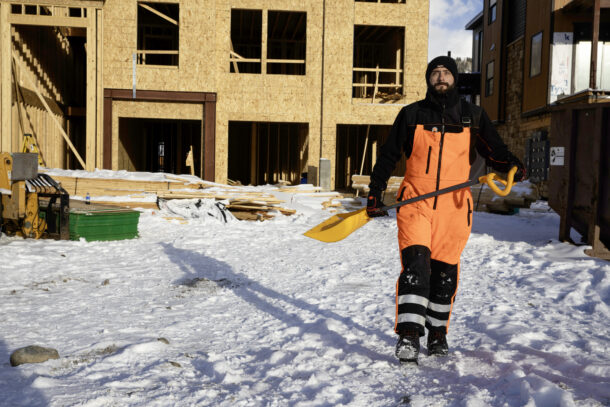
Complete Protection from Cold, Wet Winter Weather
When temperatures are freezing and falling fast, the secret to staying safe on the job is staying warm and staying visible. HiVis Insulated Softshell Bib Overalls coordinate perfectly with other garments, gloves and waterproof work boots from RefrigiWear, including the HiVis Insulated Softshell Jacket and several insulated hoodies and thermal sweatshirts in high-visibility colors.
Learn more about outfitting your team with weather-ready, high-visibility outerwear at pro.refrigiwear.com.
